Introduction: Fritz Lang’s Dark Portrait of Desire
Scarlet Street is a 1945 film directed by Fritz Lang that stands as a defining example of the film noir movie tradition. Directed by Lang and produced by Walter Wanger and Fritz Lang himself, the motion picture reunites Edward G. Robinson, Joan Bennett and Dan Duryea in a story of longing, betrayal and ruin. The film noir movie sensibility pervades the narrative and visuals: shadowed interiors, moral ambiguity, an ordinary man undone by passion, and the corrosive power of greed and performance. This article approaches Scarlet Street as a classic cinema critic, unpacking its narrative structure, thematic density, production history, visual style, and cultural legacy while remaining faithful to the authoritative accounts on the film’s background and reception.
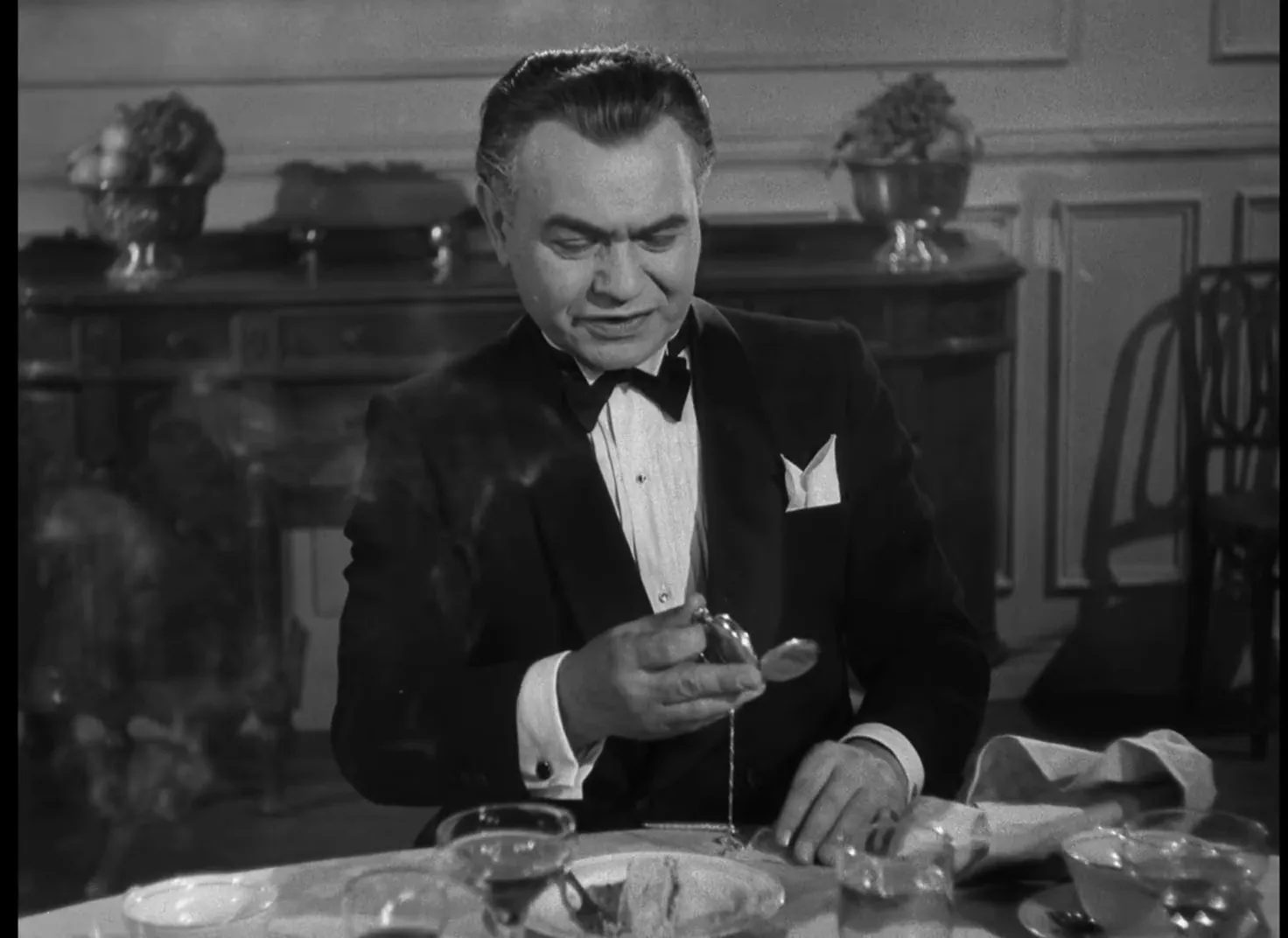
Outline of What Follows
- Historical context and provenance of Scarlet Street
- Plot overview and key narrative beats
- Character studies: Chris Cross, Kitty March, Johnny Prince, Adele
- Themes and motifs: art, authenticity, loneliness, and moral collapse
- Visual style and film noir movie aesthetics
- Production notes: crew, budget, release and censorship
- Reception at the time and critical reappraisal
- Legacy: influence, exhibitions and contemporary viewings
- Concluding appraisal as a landmark film noir movie
Historical Context and Provenance
Scarlet Street originates in a literary and cinematic lineage that stretches back to France. The screenplay adapts Georges de La Fouchardière’s novel La Chienne and the subsequent stage treatment by André Mouézy-Éon—an inheritance the film shares with Jean Renoir’s 1931 cinematic La Chienne. Fritz Lang’s 1945 Scarlet Street relocates the narrative to New York and updates its moral anxieties for American audiences amid the shadowed, post-Depression world of urban anonymity.
The film’s provenance matters for understanding its approach: Lang took material that earlier filmmakers had treated with a satirical or ironic eye and shifted it into an unsparing, noir-inflected tragedy. In this translation the story’s bleak moral center is sharpened; that sharpening is what makes Scarlet Street a paradigmatic film noir movie. Actors who had worked with Lang before—Edward G. Robinson, Joan Bennett, Dan Duryea—return to embody familiar archetypes transposed into the bleak urban geometry of postwar New York.
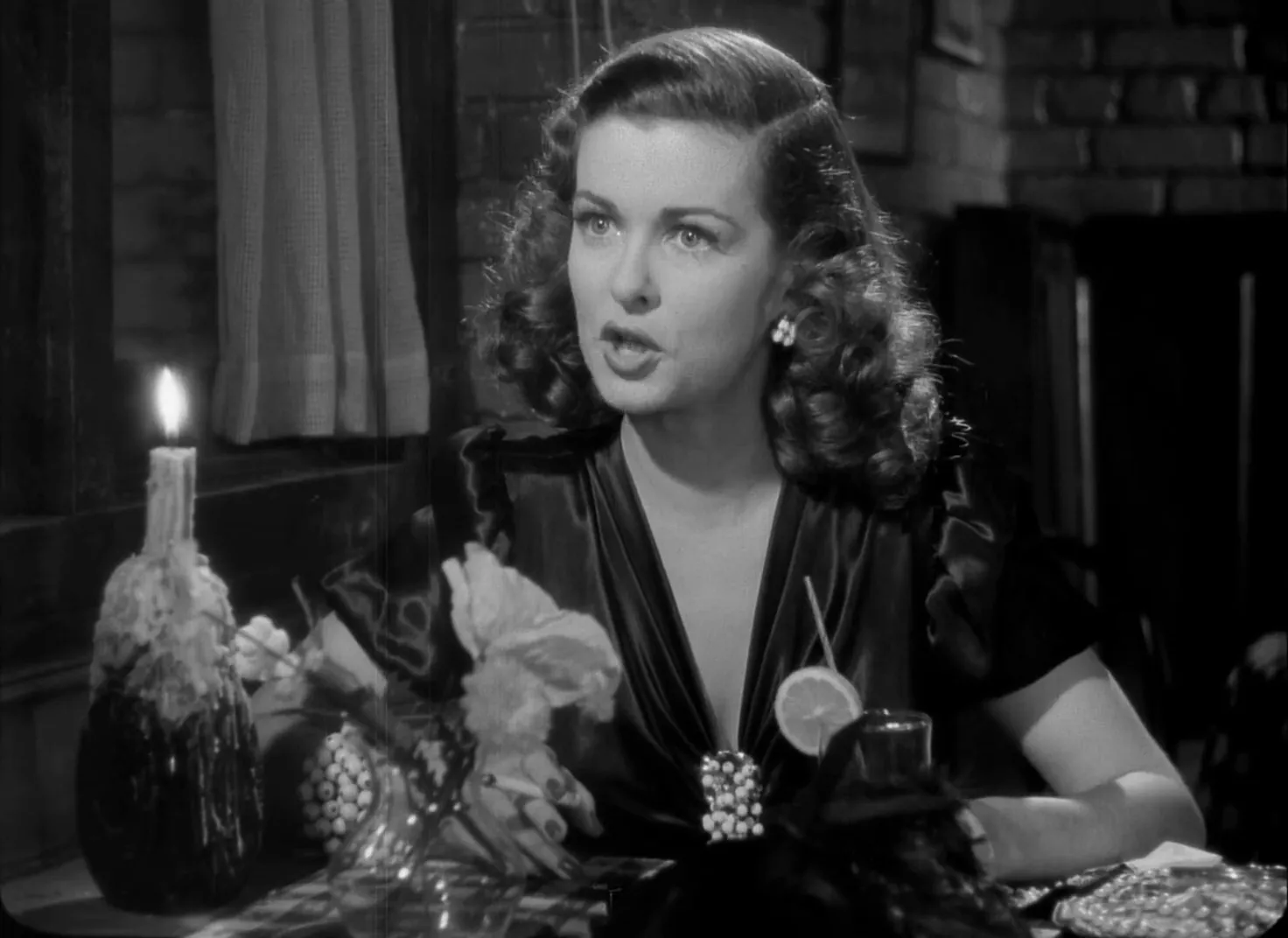
Plot Overview: The Descent of Christopher Cross
At its surface, Scarlet Street charts the unraveling of Christopher "Chris" Cross, a late middle-aged cashier for a clothing retailer, rewarded at the start for long service with a gold watch. The watch is not merely a prop but a synecdoche for Chris’s life: reliable, long-serving, and unnoticed. Chance brings Chris to rescue Katherine "Kitty" March, a young actress, from an assault in Greenwich Village. Mistaking his manners and refined talk for wealth and artistic success, Kitty misreads Chris and becomes a focal point for the predatory designs of her boyfriend, Johnny Prince.
The plot accelerates as Johnny and Kitty use Chris’s naïveté to secure living arrangements and money, persuading him to foot expenses and even to steal. The central irony is that Chris, who claims artistic sensitivity and paints in secret, is the real creator behind paintings that will, through deceit, make "Kitty March" famous. Chris’s name remains invisible while “Kitty” enjoys critical acclaim. The theft of credit and the theft of money fuse into the film’s principal tragedy: an honest man’s work is appropriated by the people who exploit his soft heart.
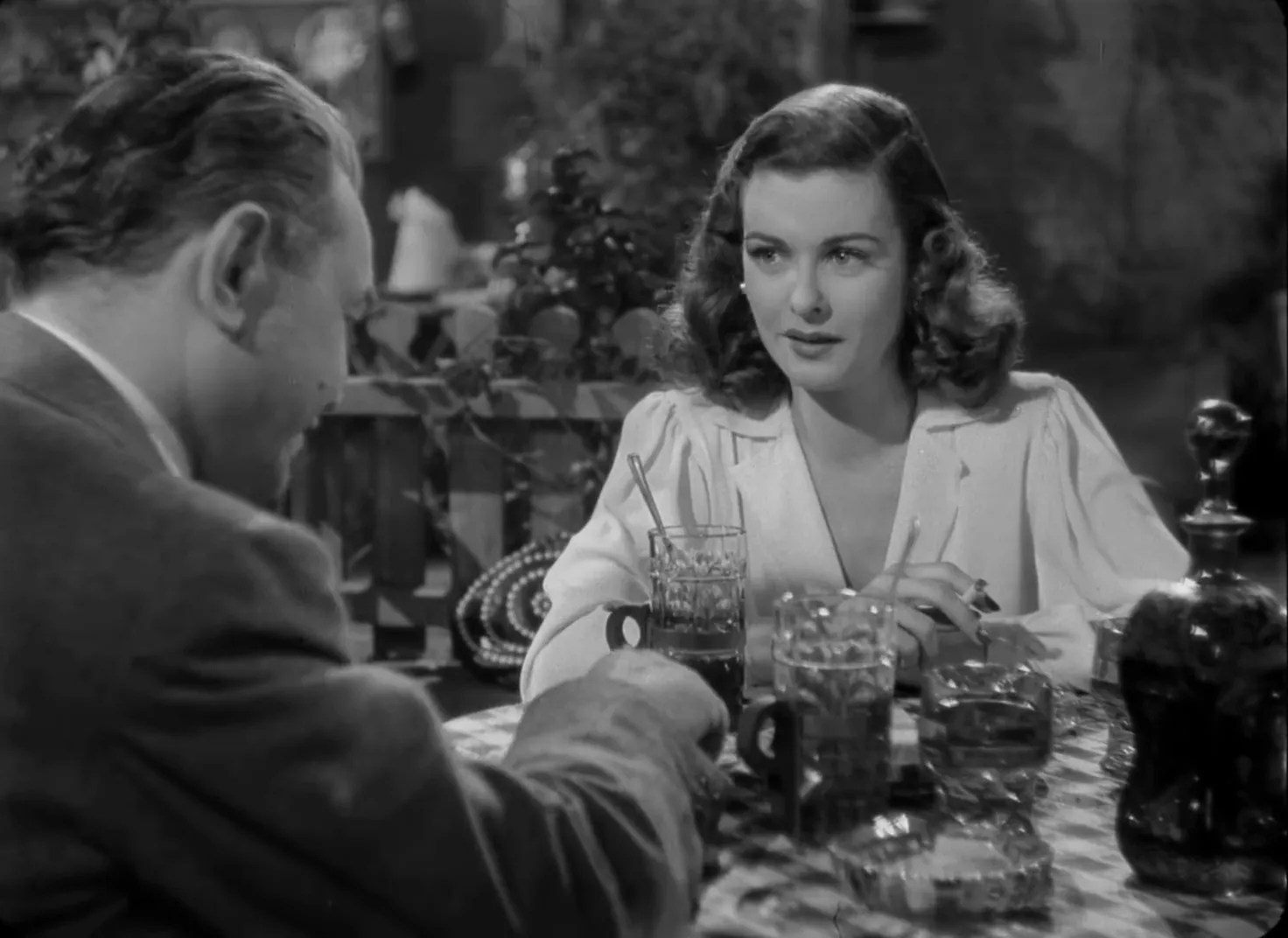
The Fateful Climax and Aftermath
When the duplicity culminates—Chris discovering Kitty in an embrace with Johnny, then being spurned—the tragedy reaches a violent apex. In a fit of jealous rage, Chris stabs Kitty with an ice pick. A trial follows, the wrong suspect is convicted, an execution occurs, and Chris is left to live with his conscience. The film’s final act finds him homeless, wandering the city, haunted by the voices of those whose fate he twisted. That bleak ending is quintessential to the film noir movie tradition: there is no triumphant moral resolution, only the hard currency of punishment and a lingering sense of moral catastrophe.
Character Studies: Anatomy of the Central Figures
Christopher "Chris" Cross: The Everyman Artist
Chris is the emotional core of Scarlet Street. A midlife figure, he is defined by quiet wants: respect, a place for his modest art, and the hope of being seen. In the film noir movie scheme, he is not an antihero in the conventional sense; he is a sympathetic, ordinary man whose fatal weakness is an excess of tenderness and credulity. Lang and Robinson together craft a portrait of someone who is simultaneously earnest and pathetically self-deceiving. Chris’s repeated insistence that he paints "for fun" becomes a tragic refrain when those paintings become a commodity in the hands of others. The film noir movie leverages his ordinariness to maximize the tragedy: the fall is greater because the man is so unremarkable.
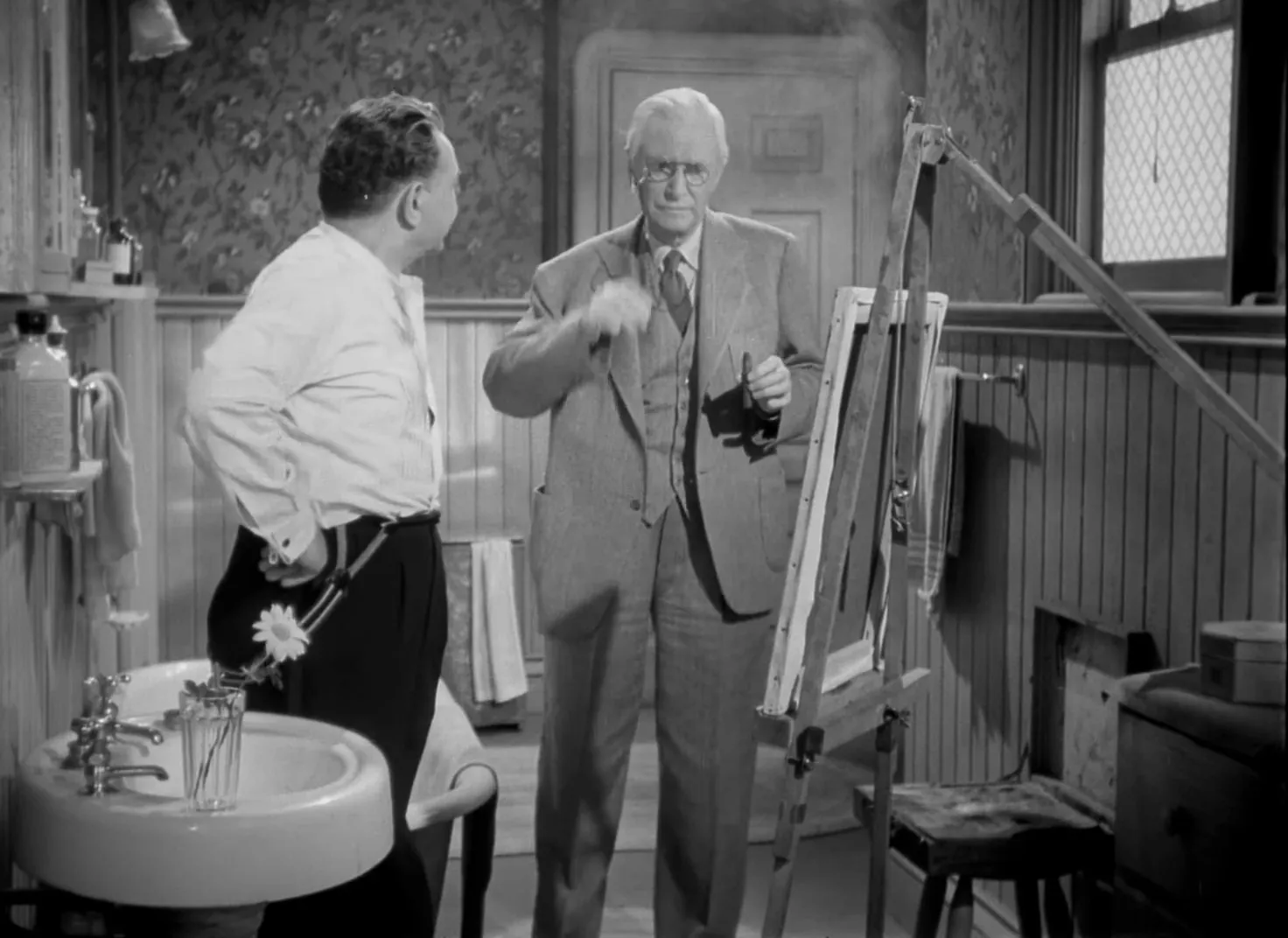
Katherine "Kitty" March: The Ambiguous Muse
Kitty occupies the complicated space between victim and agency. At times she is complicit, at times she is vulnerable. She is not a simple femme fatale in the classic film noir movie mold; rather, she alternates between survivalist pragmatism and opportunistic performance. The ambiguity charges the drama: she is the live wire between Chris’s imagination and Johnny’s exploitation. As far as narrative function goes, Kitty is the pivot around which the moral economy of the film turns—she is the singer to whom painting becomes a performance, and that performance will cost others dearly.
Johnny Prince and Adele: Two Sides of Urban Cruelty
Johnny Prince is the slick opportunist who views relationships as cash flow. He represents the amoral, predatory strand of the film noir movie world that exploits kindness and markets illusions. Adele Cross, Chris’s shrewish wife, reflects a different mode of cruelty: the suffocating, jealous domesticity that stifles Chris while clinging to an idolized past. Adele’s fury—especially when she recognizes the painting's success and the perceived theft—interrupts any fragile equilibrium Chris has. Between Johnny’s street-smart amorality and Adele’s resentful possessiveness, Chris is trapped in a social triangle that is emblematic of film noir movie moral entrapments.
Themes and Motifs: What Scarlet Street Says About Art, Authenticity and Desire
Scarlet Street interrogates multiple themes with an unrelenting focus. The film noir movie frame allows Lang to fold these motifs into its visual grammar and narrative cadence. Chief among them are questions of authenticity—who owns art, and how does society confer value—and the corrosive effects of desire and self-deception.
Art and Authorship
The drama about paintings and credit is not simply plot mechanics; it is the film’s central ethical problem. Chris’s labor, his "lines around what he feels," is commodified and rebranded as Kitty’s genius. The film noir movie thus becomes a meditation on how the marketplace (and the performative culture of celebrity) can distort and weaponize creative labor. Ironically, the artistic success comes when Chris himself renounces authorship, uttering the claim that he cannot draw—an act that condemns another man and allows the lie to consolidate into value.
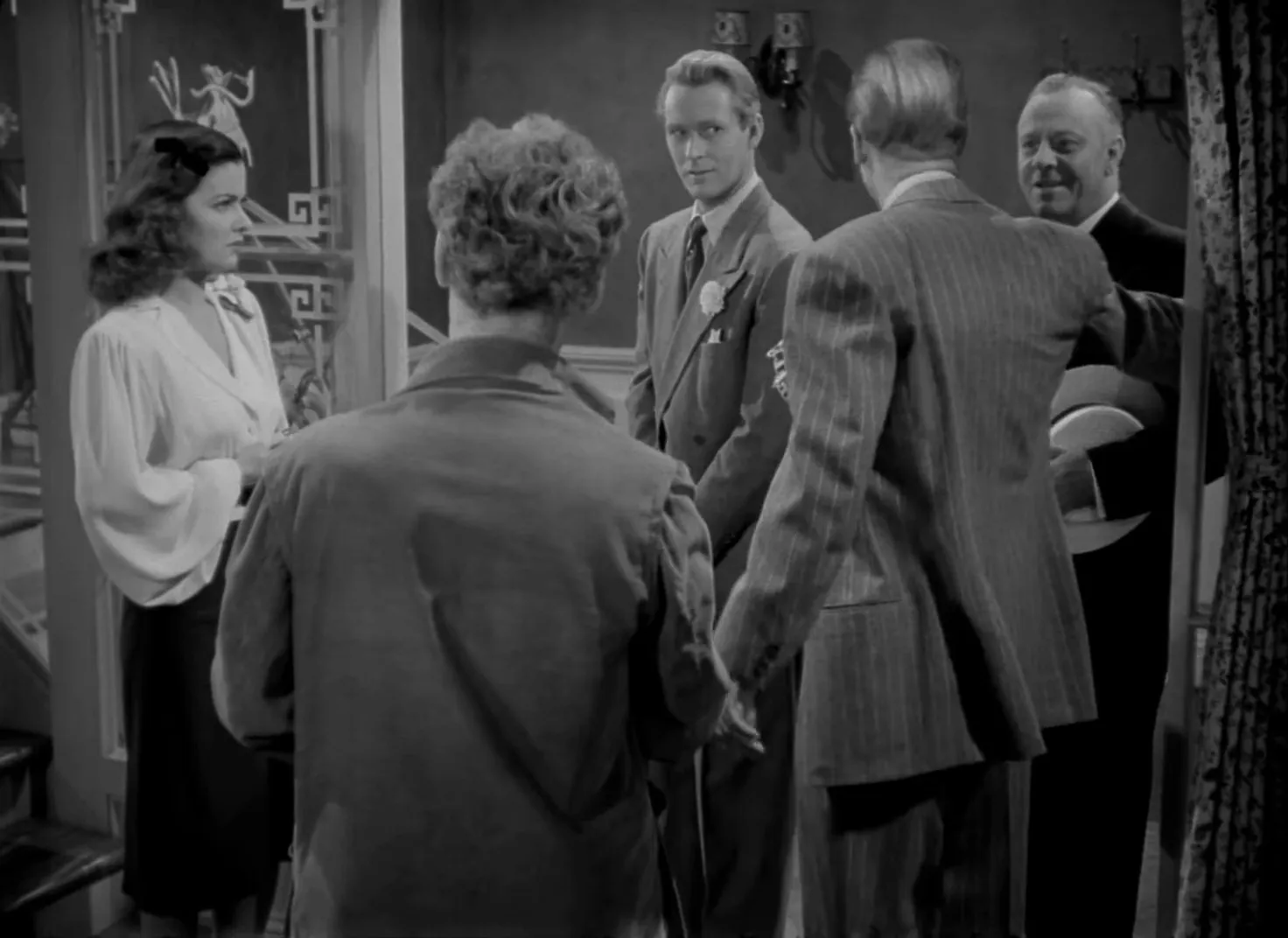
Loneliness, Yearning and the Price of Vulnerability
Lang places loneliness center stage: Chris’s yearning for affection and recognition makes him easy prey. The film noir movie is often preoccupied with alienation, and Scarlet Street represents alienation as both existential and practical—Chris is alone in his marriage, in his workspace, and in his creative life. The narrative insists that vulnerability without prudence is not virtuous; it is perilous. Lang’s moral order is not one that sanctions pity uncomplicatedly; rather, pity has consequences when it encounters calculated exploitation.
Performance, Identity and Deceit
Acting, pretense, and the theater of daily life infuse the film. Kitty’s role-playing—her transformation from struggling actress to celebrated "artist"—illustrates the thin boundary between identity and performance. In the film noir movie logic, identity can be purchased, staged, or stolen. Scarlet Street’s cruelty comes from how deftly social forms—galleries, critics, lovers—can stage the legitimacy of an identity regardless of its provenance.
Visual Style: Lighting, Composition and the Film Noir Movie Look
Scarlet Street’s visual language is integral to its meaning. Cinematographer Milton R. Krasner builds claustrophobic interiors with fractured lighting; the angles, the shadows, and the urban textures translate moral ambiguity into visible form. The film noir movie archetype—low-key lighting, stark contrasts, and oblique camera angles—pervades Lang’s staging. The metropolis is shot as a labyrinth of loneliness; interiors, especially the studio and the Cross household, feel tight and invasive.
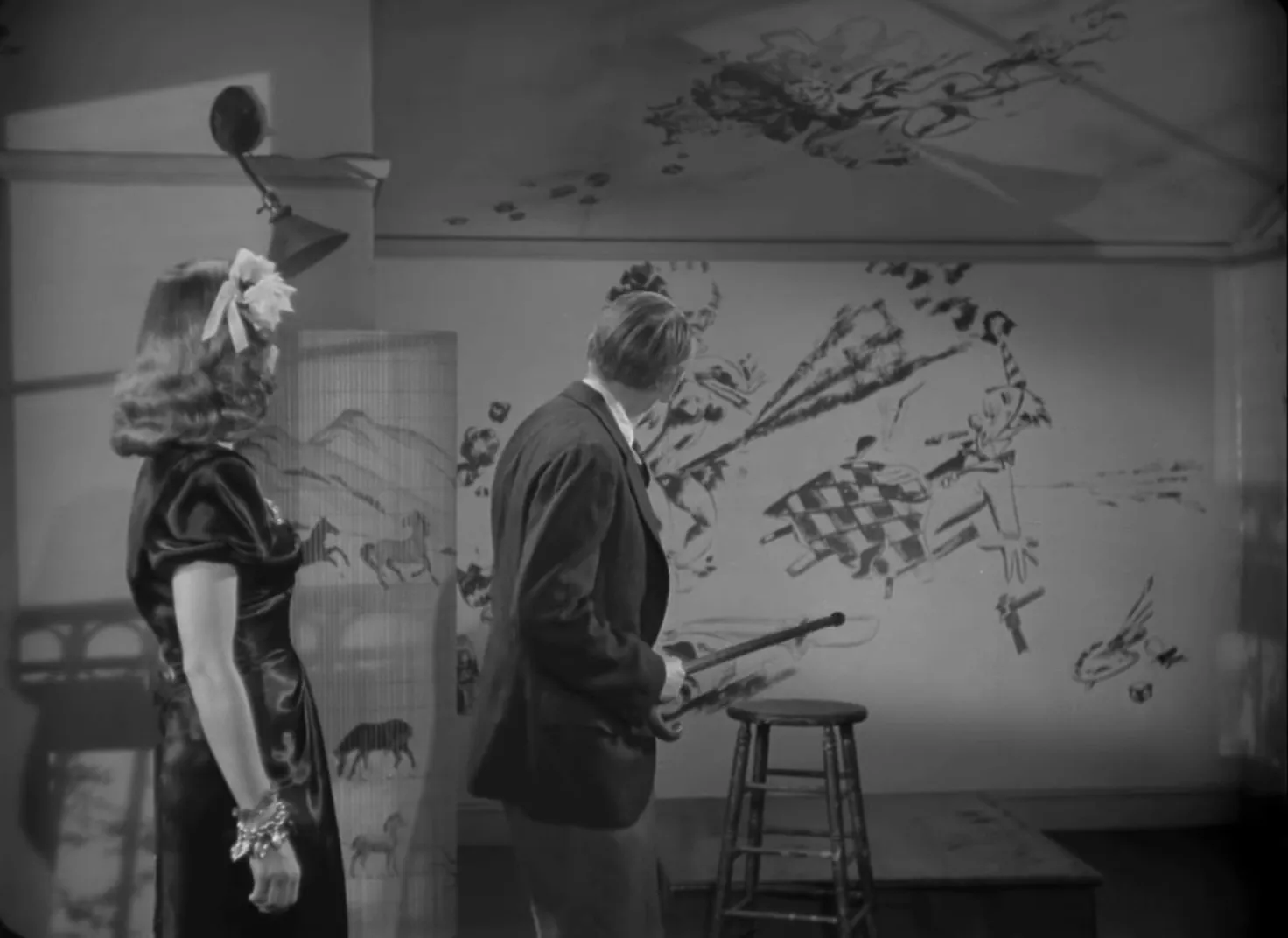
Lang’s mise-en-scène turns objects into emblems: the gold watch, the ice pick, the paintings themselves, and the gallery window function as nodes of fate. The watch signifies a life of service and unnoticed time; the ice pick becomes an instrument of irreversible violence; the paintings are the currency of recognition and the gallery window a stage that pronounces a verdict. This symbolic choreography is part of what makes Scarlet Street a consummate film noir movie: moral objects and material artifacts conspire to determine destiny.
Production Notes and the Studio Context
Scarlet Street was produced by Walter Wanger Productions in association with Fritz Lang Productions and Diana Production Company, and was distributed by Universal Pictures. The film was released in the United States on December 28, 1945, and runs 102 minutes. The production had a budget of approximately $1,202,007 and earned box office rentals of about $2,948,386. Those figures place the film as a modest commercial success in its moment, but the film’s gravitas extends far beyond ledger entries.
John Decker created twelve paintings for the film; in a noteworthy institutional moment, those paintings were exhibited at the Museum of Modern Art in New York in March 1946. That interplay between fiction and the art world—canvas made for film entering museum space—mirrors the film’s thematic interrogation of authenticity and commerce. The film noir movie’s art world is not merely a backdrop; it is an engine driving narrative ironies.
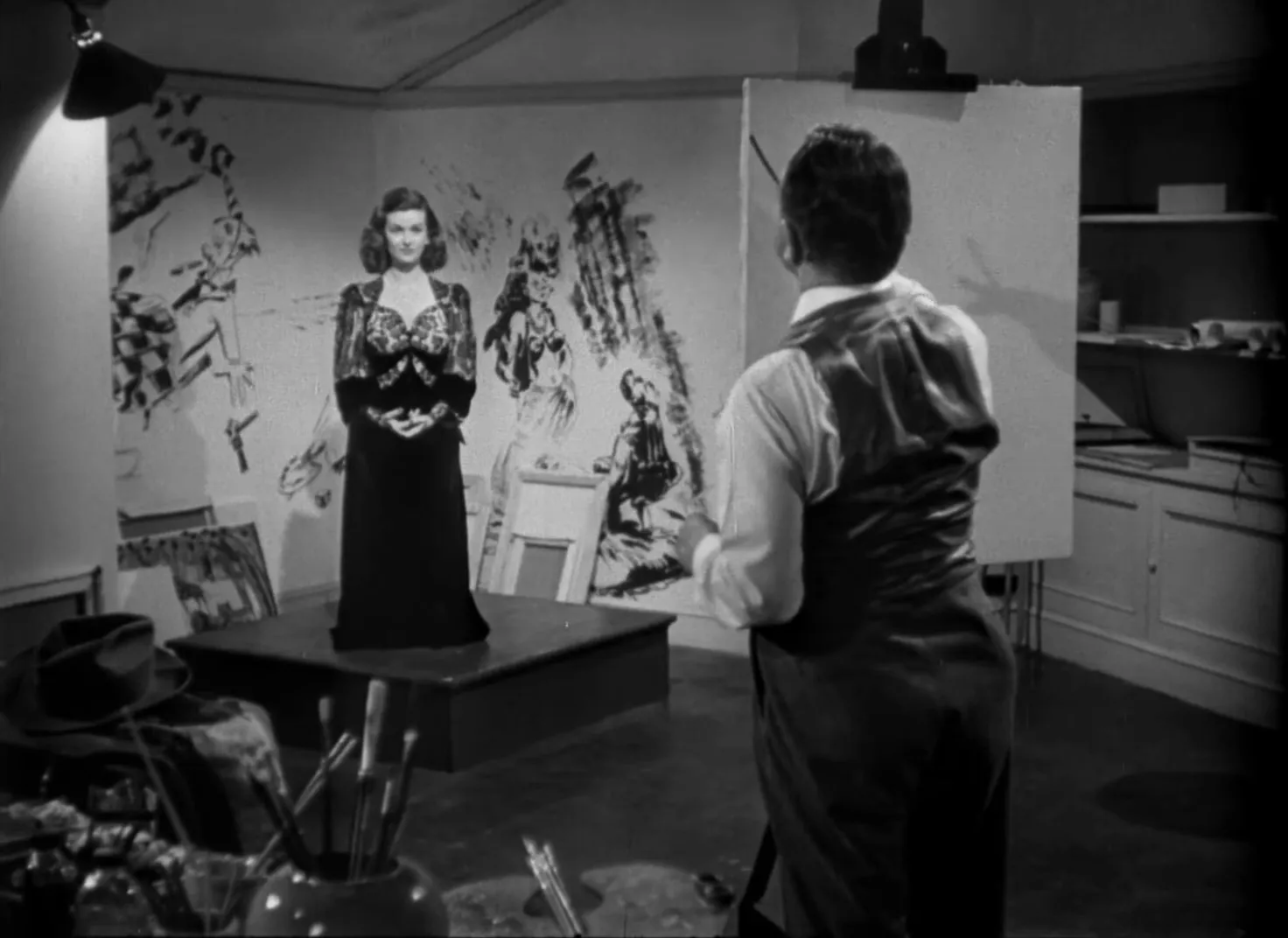
Cast, Crew and Collaboration
The principal cast includes Edward G. Robinson as Christopher Cross, Joan Bennett as Katherine March, Dan Duryea as Johnny Prince, Margaret Lindsay as Millie Ray, Rosalind Ivan as Adele Cross, and Jess Barker as Damon Janeway. The screenplay is by Dudley Nichols, adapted from La Chienne; the cinematography is by Milton R. Krasner; editing by Arthur Hilton; music by Hans J. Salter. The film’s ensemble and creative team have multiple points of resonance with Lang’s earlier American thrillers—most notably The Woman in the Window (1944)—establishing Scarlet Street as part of an extended meditation by the director on urban passion and moral collapse.
Censorship, Bans and Moral Panic
Scarlet Street’s bleak themes provoked controversy upon release. Local authorities in several American cities—New York, Milwaukee, and Atlanta—banned the film early in 1946 because of its dark plot and distressing themes. The bans reflect the era’s anxieties about cinematic influence and the moral implications of representing crime, sexual manipulation, and culpability without easy redemption.
That institutional pushback only underlines the film noir movie’s capacity to disturb. Lang’s unwillingness to furnish a consolatory moralizing ending made certain municipal censor boards uneasy: the narrative refuses to neatly rehabilitate or punish in ways that satisfy simple moral accounting. The film noir movie form often embraces that unsettled ethical atmosphere; Scarlet Street stands as a particularly uncompromising example.
Critical Reception: Contemporary and Retrospective Appraisals
Contemporary critical reaction to Scarlet Street was mixed. Bosley Crowther, writing for The New York Times, found the film’s presentation sluggish compared to the raw vitality of its French source material. Crowther’s critique centered on a sense that Lang’s treatment yielded a tale more contrived than intensely passionate. Yet many critics and later scholars have recognized Scarlet Street’s achievement in translating the source’s bitter insights into a humane, if unforgiving, American tragedy.
Over time critics and scholars have revisited Scarlet Street as a masterpiece of the film noir movie canon. Its complex moral staging, superb performances, and the cruelty at the heart of its ethics invite repeated readings. Scholars point to the film’s formal rigor—its compositional discipline and its ability to permit ordinary detail to build into apocalyptic consequence. The film noir movie designation coheres across decades because Scarlet Street captures noir’s core preoccupations with corruption, visual chiaroscuro, and the city as an incubator of deceit.
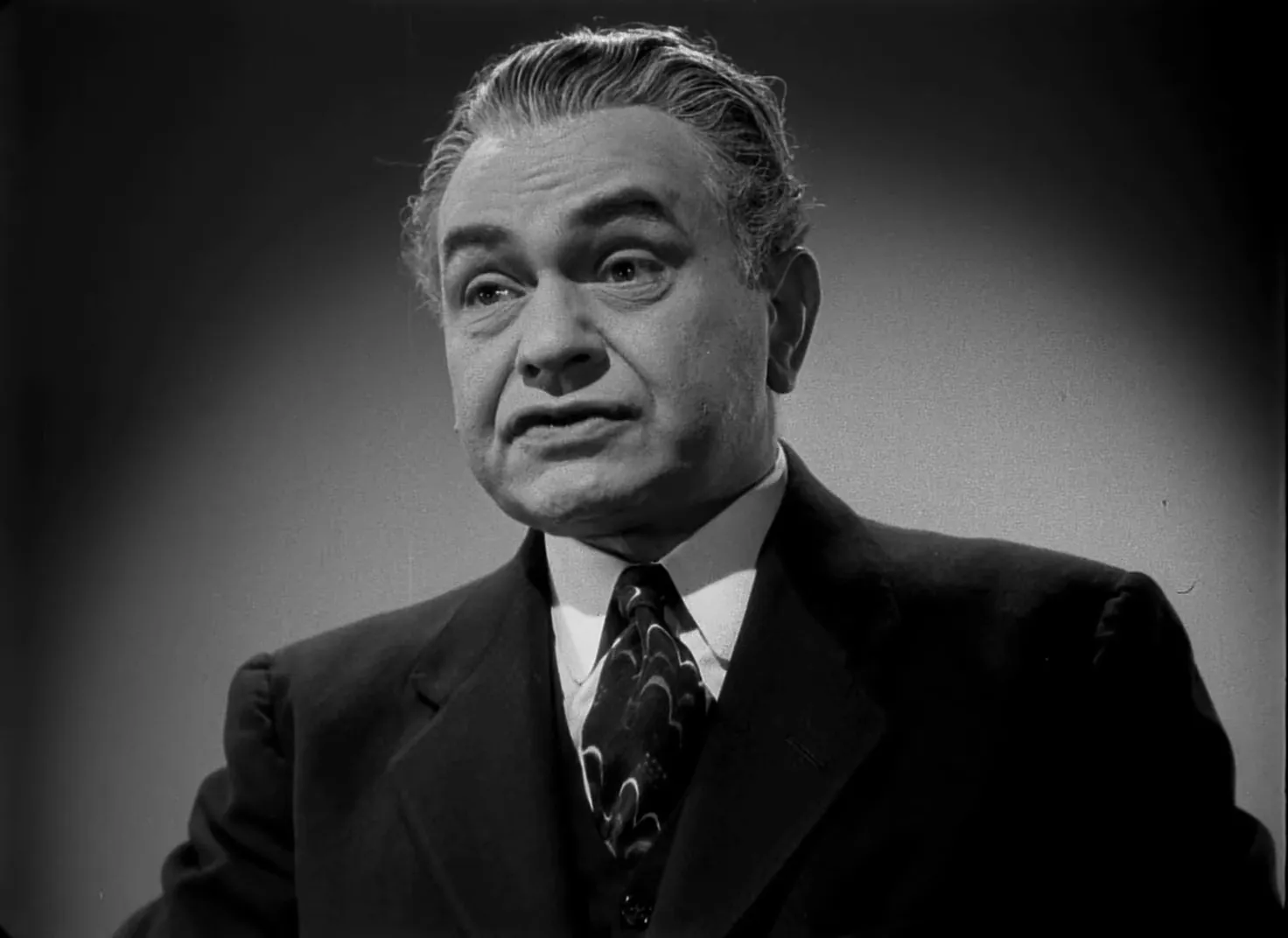
Scene-by-Scene Analysis: Key Moments in the Film Noir Movie
Opening: The Watch and the Promise of Time
The film opens with Chris at work, honored with a golden watch for twenty-five years of service. The ceremony is bathed in a false warmth—it quickly reveals Chris’s marginal social position. The watch’s inscription marks fidelity, but in Lang’s framing it hints at a life whose clock will accelerate toward catastrophe. In the film noir movie idiom, such objects prefigure fate.
Chance Rescue and the Misread Identity
Chris’s rescue of Kitty in Greenwich Village is the pivot on which all subsequent deception turns. His courtly language and talk of painting are misread as signs of wealth and artistic success. That single misrecognition converts a good deed into an invitation to exploitation. In this film noir movie, chance is not neutral; it installs characters into moral economies they cannot escape.
Gallery Window and Market Valuation
The moment when paintings appear in Delarowe’s window is crucial. It demonstrates how value is conferred by institutions—critics, galleries, and collectors. Damon Janeway’s appraisal transforms anonymously produced canvases into valuable commodities and simultaneously seals Chris’s anonymity. The film noir movie explores how cultural institutions can both discover and erase authorship.
The Murder and Moral Reversal
The stabbing is sudden and horrific. In a single gesture Chris destroys any naive hope he might have held for redemption. The trial’s perverse logic—Chris’s insistence that he cannot paint—serves as the moral pivot: to protect his art’s integrity, or perhaps out of shame, he denies himself. That denial has catastrophic consequences: another man, Johnny, is convicted and executed. Scarlet Street stages guilt as manifold—legal, moral, and existential—underscoring the film noir movie’s signature discomfort with tidy justice.
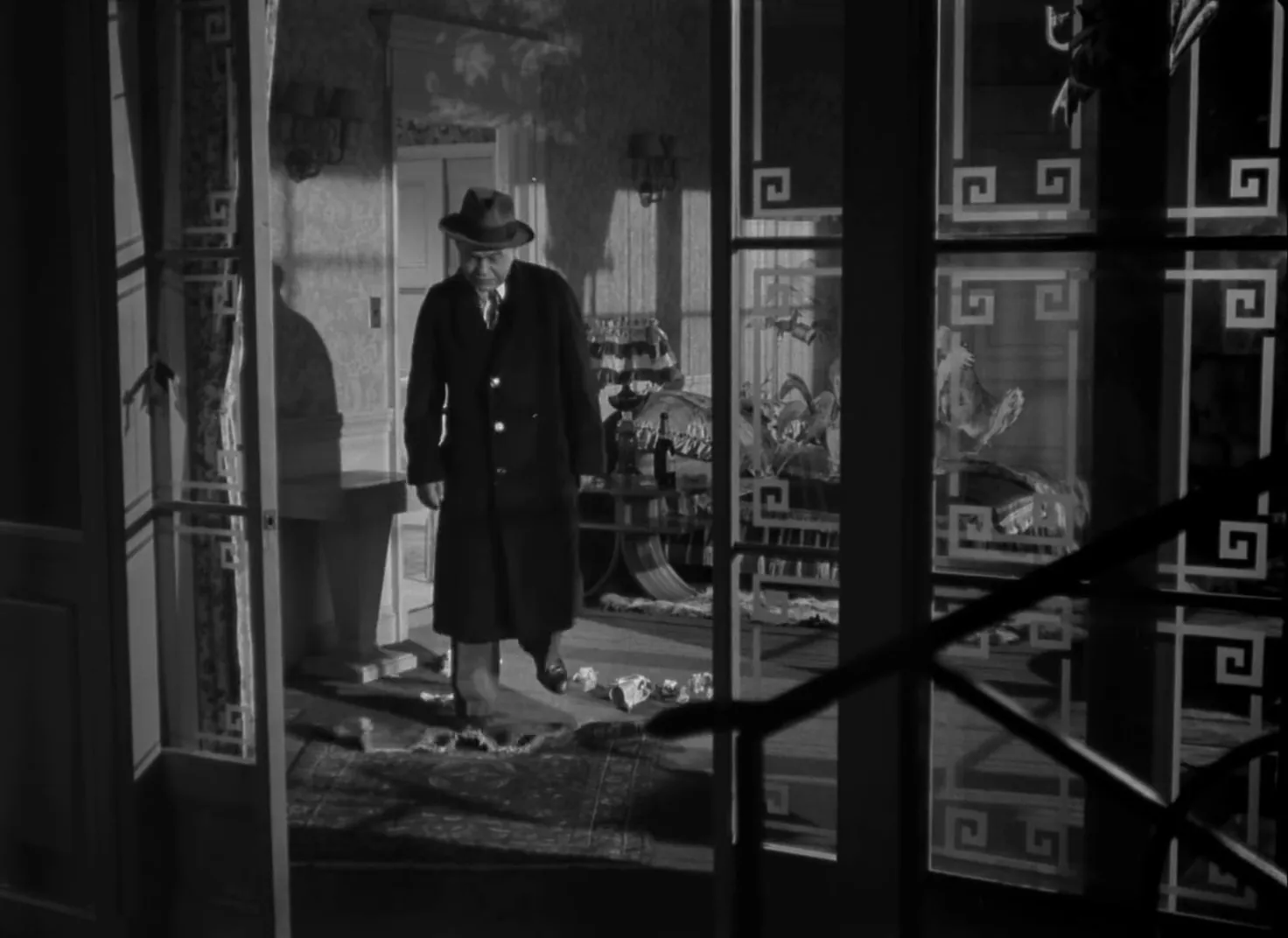
Final Images: Ruin, Madness and the Marketplace
The film closes on Chris’s utter ruin. He is no longer the man who received a watch; he is a pitiful figure haunted by voices, witnessing his own paintings sold for high prices while he remains nameless and destitute. The marketplace persists, indifferent to moral outcomes. The film noir movie here performs an indictment: capitalism and the art market do not, and perhaps cannot, adjudicate moral injury.
Legacy: Exhibitions, Influence and the Film Noir Movie Canon
Scarlet Street secured a complex legacy. Beyond box office receipts, its cultural footprint includes the showing of John Decker’s paintings at the Museum of Modern Art and its ongoing inclusion in scholarly and popular lists of essential film noir movie works. The film’s reputation rests on the uneasy sympathy it extends to a protagonist who commits an unforgivable act: the story resists simple condemnation, asking instead for analytic attention to motivation, context, and the corrosive effects of desire.
Lang’s film also sits in conversation with other works: its proximity to The Woman in the Window (1944) underscores recurring obsessions—lonely men, transgressive women, and the urban stage. The film noir movie lineage that includes Scarlet Street has grown richer with decades of critical reevaluation, from early controversy and municipal bans to modern appreciation for Lang’s formal and ethical rigor.
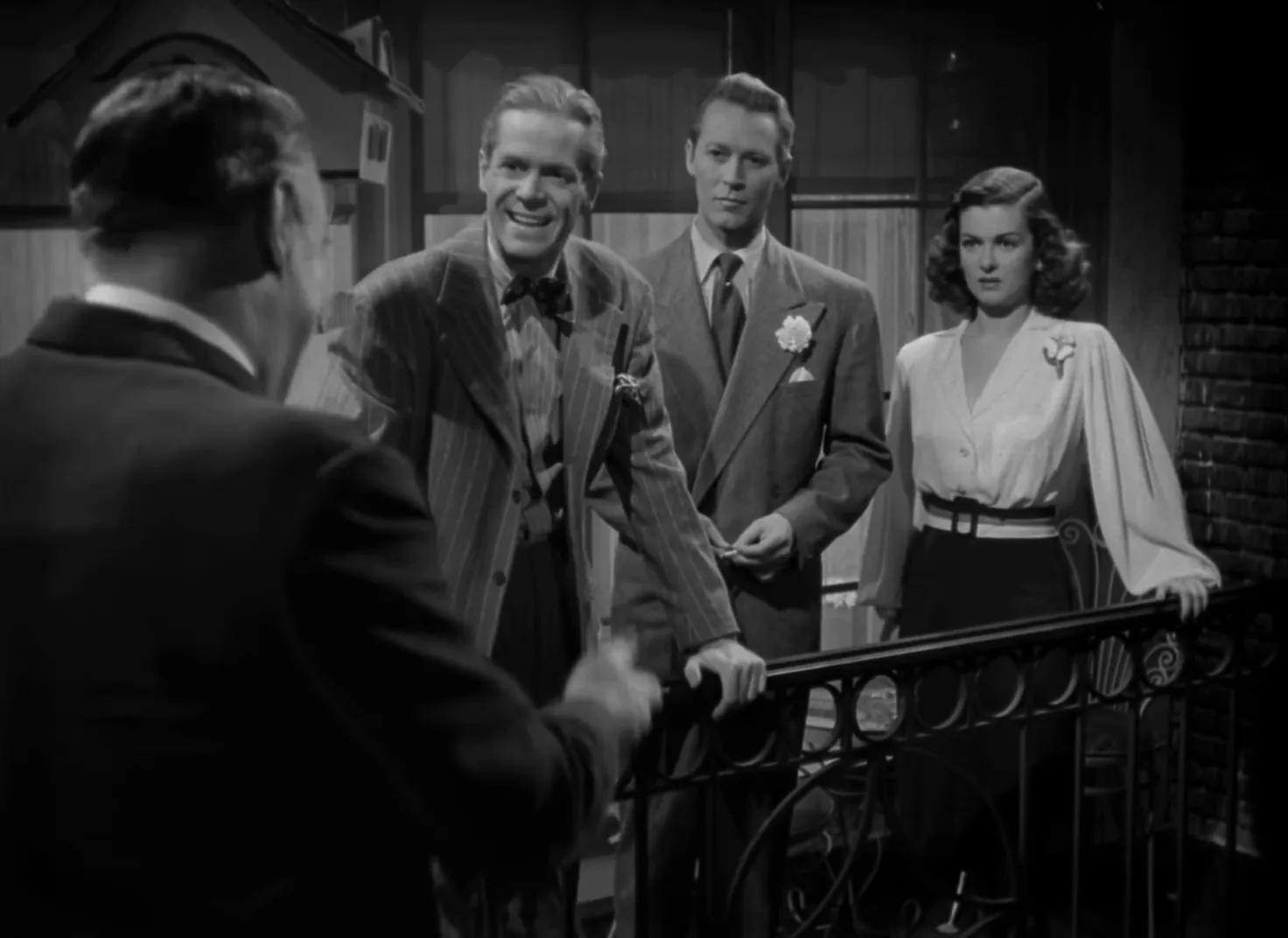
Why Scarlet Street Remains a Vital Film Noir Movie
There are several reasons Scarlet Street continues to draw study and admiration. First, it fuses performance and commodity in ways that anticipate later debates about authenticity and authorship. Second, its characters are fully realized and morally ambiguous: they resist pantomime and invite pity and judgment in complex mixtures. Third, Lang’s visual control—his use of light to make inner turmoil visible—anchors the film in a cinematic language that is both poetic and forensic. Finally, Scarlet Street engages persistent cultural anxieties about the price of success and the disposability of creators in a market-driven world, concerns that make it as urgent now as it was in 1945.
Reception Reconsidered: From Censure to Canon
Initial reaction to Scarlet Street included municipal censorship, some critical ambivalence, and the discomfort of audiences confronted with an ending that refused to reassure. Yet the film’s subsequent exhibition history and scholarly attention have recast it as a touchstone of the film noir movie tradition. Its aesthetic innovations, ethical provocations, and performances—especially Edward G. Robinson’s complex portrayal of Christ Cross—sustain its critical life.
Modern critics and historians often emphasize the film’s formal discipline—its editing, composition, and the role of objects—and its moral seriousness. Lang’s direction refuses melodramatic excess and opts for a kind of clinical intensity that respects the logic of character and consequence. As a film noir movie, Scarlet Street is both an exemplar and a meditation: it demonstrates the form’s capacity to treat ordinary human frailty with tragic seriousness.
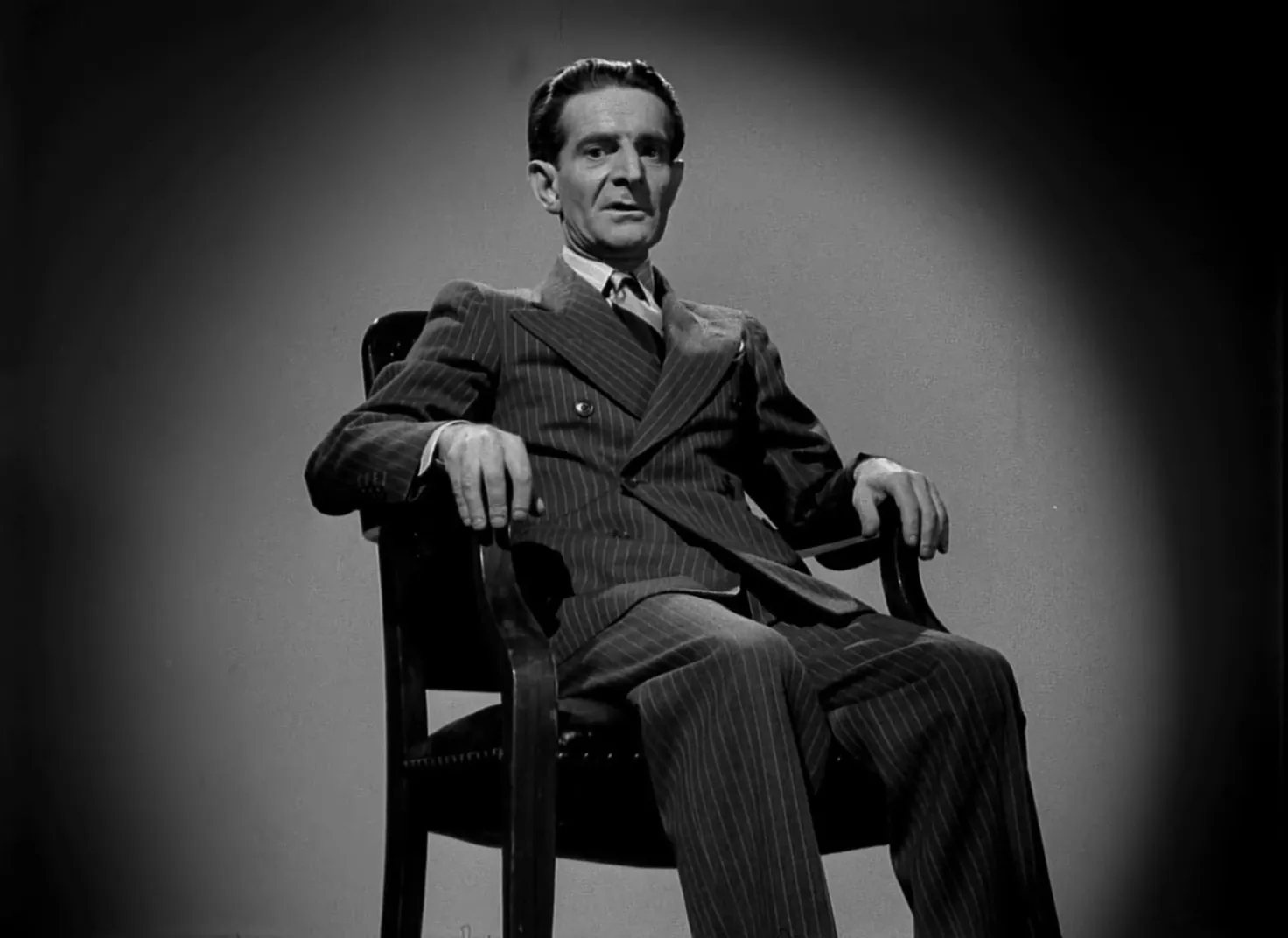
Concluding Appraisal: Scarlet Street as an Enduring Film Noir Movie
Scarlet Street is a film that resists tidy categorization: it is a tragedy, a noir, a moral inquiry, and a bitter satire of commercial and emotional economies. Fritz Lang’s direction, Dudley Nichols’s script adaptation, and Edward G. Robinson’s performance combine to make a film noir movie that interrogates how ordinary lives can be dismantled by greed, desire, and the instrumental logic of the market. The work remains a vivid study of how the attribution of value—artistic, monetary, or sentimental—can rearrange fates.
For the classic cinema critic and for contemporary viewers alike, Scarlet Street offers a model of how a film noir movie can function as social diagnosis: it captures cultural patterns and personal weaknesses and turns them into a trenchant, unforgettable drama. Its final images—of a man who sees his own masterpieces sold for money that never touched his hands—linger as a moral tableau. In that lingering, the film noir movie reveals its power: to make the spectator confront the cruelty of systems that value objects more readily than the people who made them.
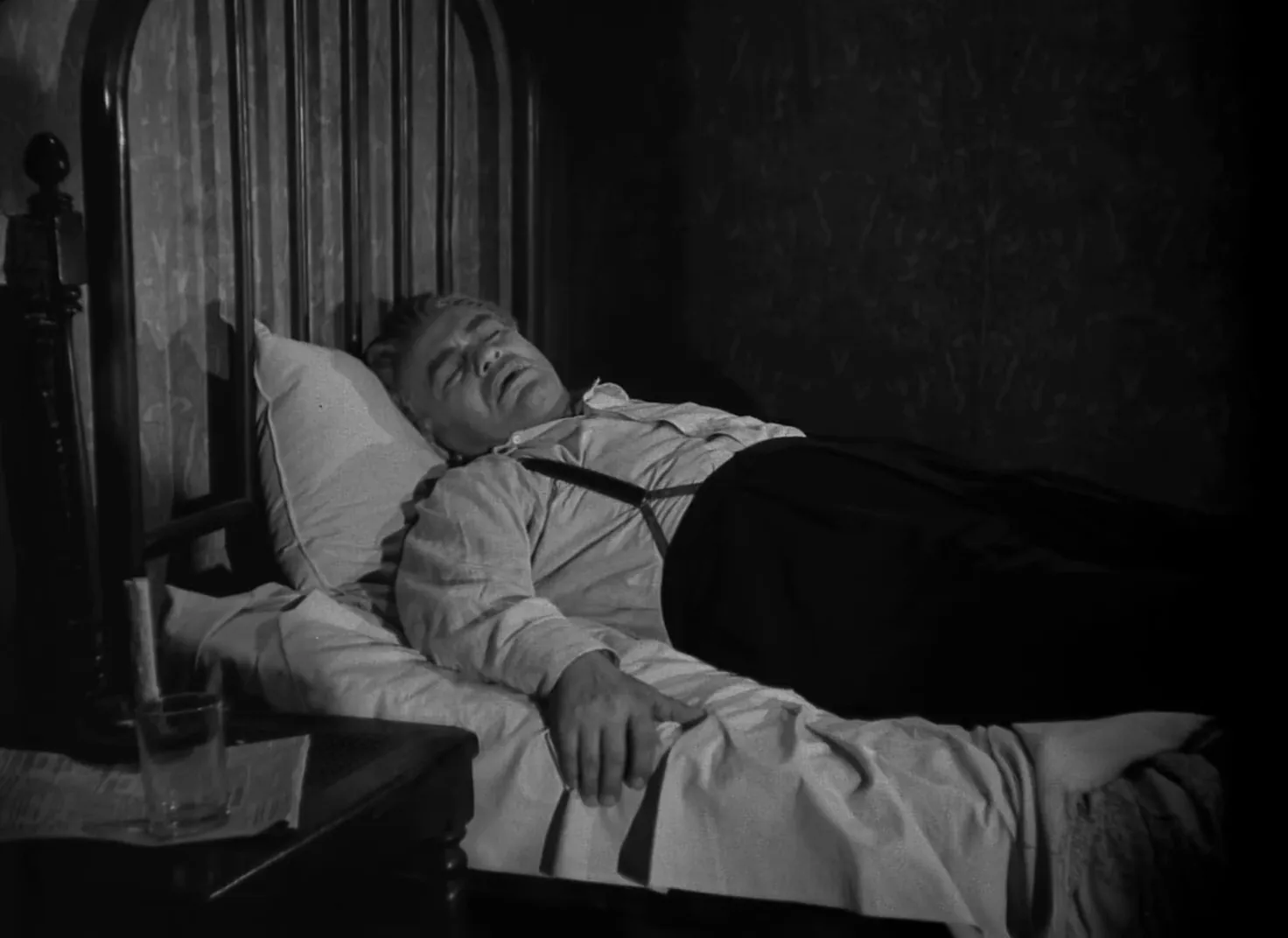
Suggested Viewings and Further Reading
Those attracted to Scarlet Street’s dark moral architecture should consider parallel viewings: Fritz Lang’s The Woman in the Window (1944) for thematic parallels, Jean Renoir’s La Chienne (1931) to explore source-material variations, and later art-market examinations in cinema such as films that interrogate authorship and fame. For a documented historical account, consult authoritative records relating to the film’s production, exhibition and reception history. The Museum of Modern Art’s exhibition history offers a fascinating appendage to the film’s life: canvases made for the screen that enter a museum context blur boundaries between cinematic fiction and institutional validation.
Final Notes from the Classic Cinema Perspective
Scarlet Street is essential viewing for anyone interested in the film noir movie as a vehicle for moral inquiry and visual invention. Lang’s film transforms a French source into a narrative that resonates with American anxieties about identity, success, and the marketplace. The film’s uncompromising final act forces viewers to reckon with the ethical cost of desire and the sometimes unbearable consequences of misrecognition. In the catalog of film noir movie masterpieces, Scarlet Street stands out not simply for its bleakness, but for its capacity to persuade the spectator that ordinary tenderness can, tragically, become the instrument of ruin.
